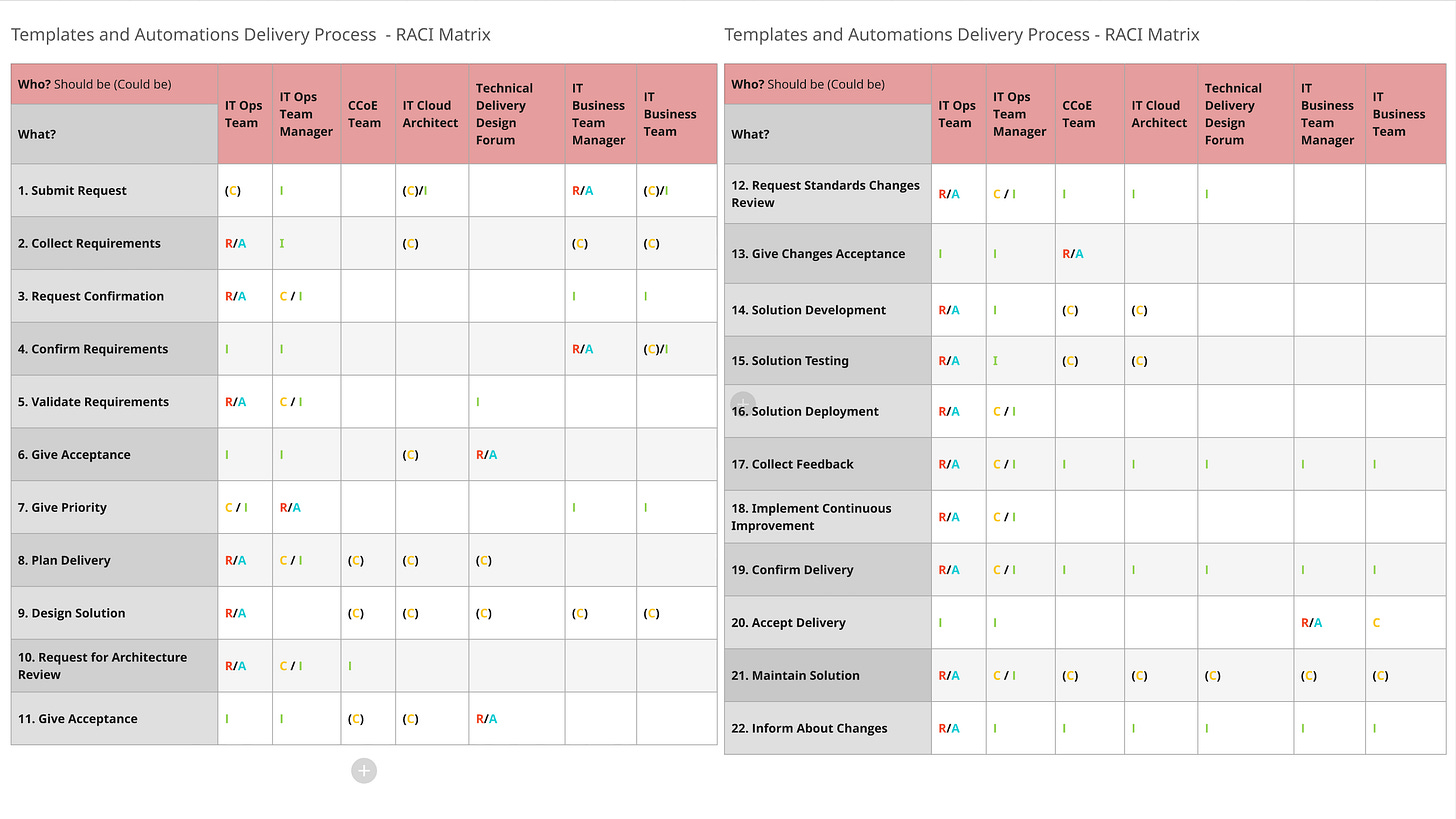The RACI+F Matrix
My Secret Weapon for Sales and Project Success
The RACI+F Matrix: My Secret Weapon for Sales and Project Success
In the fast-paced world of consulting, clarity is king. After years of managing complex projects and navigating the sometimes murky waters of stakeholder expectations, I've found one tool that consistently saves the day: the RACI+F matrix.
In this article, I'll share:
What the RACI+F matrix is and why it's transformative for consulting projects
My personal journey, discovering this powerful framework
🔐How I implement RACI+F from sales conversations through project delivery
🔐Real examples of projects saved by clear responsibility mapping
🔐Practical tips for introducing RACI+F to resistant stakeholders
🔐Why this approach prevents scope creep and miscommunication
Let's then deep dive into details.
How I Discovered the Power of RACI+F
It was about one year ago when I first realized I needed a better system. I had just wrapped up a particularly challenging project where, despite delivering what I thought was excellent work, the client seemed disappointed. During our post-mortem discussion, it became painfully clear that while I had been coordinating with the Automation Lead, the Infrastructure Team—a big part of the project—had been moving in a drastically different direction regarding cloud implementation.

That night, I went back to the drawing board. There had to be a better way to ensure everyone was on the same page from the very beginning. I started looking into better stakeholder mapping techniques and ways to ensure all parties were engaged in the project from the moment the sales process started. I tested many solutions, with varying degrees of success. A couple of months ago, I got an answer from my friend who suggested using a tool at a slightly later stage, but for me, it was an aha moment. He uses the RACI+F matrix—a responsibility assignment framework I'd encountered years before but never fully appreciated—to clearly show which tasks belong to the consulting company and which are obligations of the client itself.
What Makes RACI+F Special?
For those unfamiliar, RACI stands for:
Responsible: The person doing the work
Accountable: The person who makes the final decision and has ultimate ownership
Consulted: People whose opinions are sought before decisions are made
Informed: People who are kept up-to-date on progress and decisions
The "+F" adds "Facilitator"—the person who ensures the process runs smoothly, that all voices are heard, and that the right people are involved at the right time. In consulting, I've found this role to be essential, and in most cases it was myself.
RACI+F in the Sales Process
Let me share how you can use RACI+F during a sales process.
Imagine a scenario where you're meeting with a potential client for the first time. Instead of jumping straight into your pitch, you could pull out a blank RACI+F template and say, "Before we talk about solutions, let's make sure we understand who needs to be involved in making this project successful."
Actually, that sounds a bit awkward, and I wouldn't recommend doing this directly. Instead, here are a couple of preparation steps you can take. First, conduct some preliminary research - get to know who you'll be meeting, who works in the organization and in what positions. The internet is a good source for this information. While it might not be 100% accurate, you'll develop a general understanding of their structure.

During your first customer meeting, you typically begin with introductions. Pay attention to people's roles and relationships. Then mentally update your RACI+F matrix. Don't shy away from asking questions like, "Who else should we involve in our process to ensure the scope is detailed and tailored to your company's needs?"
In most cases, you'll receive relatively vague answers, but these responses help build a clearer picture of the customer's organization. I believe you can even include this information in your Statement of Work and ask the customer to confirm these will be the roles involved in your project.
Together, you could develop something like:
The Operations Director Richard would be Accountable (the ultimate decision-maker for project scope)
The IT Manager Michael would be Responsible (working directly with you to define technical requirements)
The CFO Robert would be Consulted (providing input on budget constraints)
The department heads from Infrastructure, DevOps, Platform Engineering and SRE would be Informed (needing to know about the upcoming changes)
And you would position yourself and the customer-side Project Manager as Facilitators (ensuring all perspectives are considered)
This approach makes the customer accountable for the results of your consulting at the sales level, which changes the project dynamics. The customer understands that your consulting isn't a magic pill to fix all their issues, and your role is to guide them in a better direction.
When submitting your proposal, including the RACI+F matrix as an appendix could differentiate you from other consultants they're considering.
From Sales to Execution: RACI+F as a Living Document
What's powerful about introducing RACI+F during the sales process is that it creates a natural transition into project execution. The matrix becomes a living document that guides collaboration throughout the entire project lifecycle.
Instead of panicking or pointing fingers when issues arise, you can simply refer to the RACI+F matrix. According to the agreed framework, everyone's roles and responsibilities are clearly defined from the start.
Keep reading with a 7-day free trial
Subscribe to Caterpillar Garden to keep reading this post and get 7 days of free access to the full post archives.


